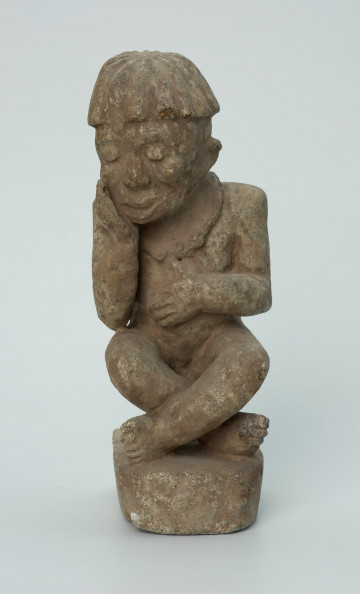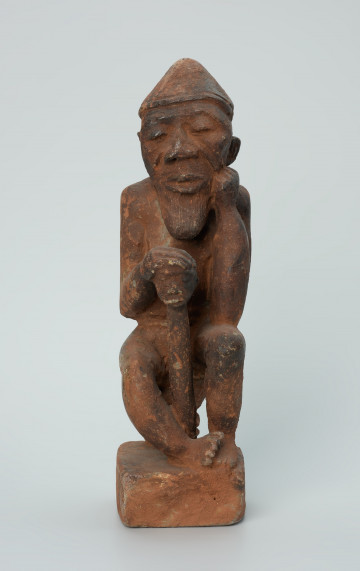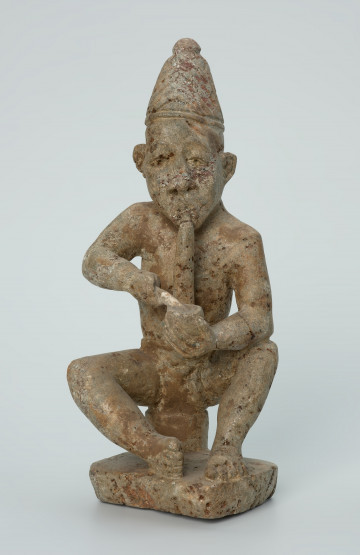
Ancestor worship figure
około 1901 — 2000
National Museum in Szczecin
Part of the collection: Mintadi figurines
The ntadi (plural mintadi) sculpture depicts a pensive village headman. It is a frequent motif appearing in the art of the people of the Bakongo ethnic group. A sitting man with his head supported by his hand and partially closed, thoughtful eyes is called fumani, or a thinker. Mintadi in the Kikongo language means guardians, custodians and is associated with the tradition and culture of the Kingdom of the Congo established in the lower reaches of the Congo River (today's territories of northern Angola, the Republic of the Congo, the western part of the Democratic Republic of the Congo), which reached its peak of development in the 15th-16th centuries and was transformed into a Portuguese colony in 1914. It is believed that mintadi figurines were already made in the 16th century. Letters written by the ruler of the Kingdom of Congo between 1510 and 1514, addressed to the king of Portugal, support the thesis. They certainly existed as early as 1695, when a missionary brought four of them to Europe. These sculptures are now in the Luigi Pigorini National Museum of Prehistory and Ethnography in Rome. Mintadi were most often placed in cemeteries, on the graves of village chiefs, their mothers and wives. They also occurred in generally venerated places, such as on family altars.
Katarzyna Findlik-Gawron
Author / creator
Dimensions
cały obiekt: height: 40,5 cm, width: 13,6 cm
Object type
sculpture
Creation time / dating
Creation / finding place
Identification number
Location / status

około 1901 — 2000
National Museum in Szczecin

około 1901 — 2000
National Museum in Szczecin

około 1901 — 2000
National Museum in Szczecin
DISCOVER this TOPIC
Museum of King Jan III's Palace at Wilanów
DISCOVER this PATH
Educational path